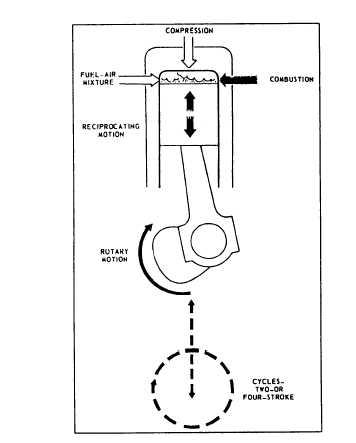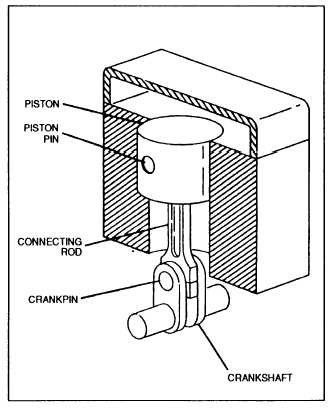CHAPTER 1
ENGINE SYSTEMS
To become a professional Equipment Operator, you
must understand the principles of operation of
automotive and construction equipment. This chapter
covers the basic principles of engines, fuel systems, air
induction systems, lubrication systems, and cooling
systems on the equipment used by the Navy and the
Naval Construction Force (NCF).
INTERNAL COMBUSTION ENGINES
An engine is a device that converts heat energy into
mechanical energy to perform work. An internal
combustion engine is any engine in which fuel is burned
within its body (fig. 1-1). The combustion that occurs
within the cylinders produces energy. This energy
moves the parts of the engine that drives the equipment.
Air and fuel are two elements needed to produce
heat energy in an engine. Oxygen in the air is evenly
mixed with the fuel and is vaporized. This mixture
allows for quick and even burning. The chemical
process that occurs when the air and fuel mixture in the
cylinder is ignited is known as combustion.
An engine uses both reciprocating motion and
rotary motion to transmit energy. Four parts of the
engine work together to convert reciprocating motion
into rotary motion. These four parts are as follows: a
cylinder, a piston, a connecting rod, and a crankshaft
(fig. 1-2). The piston and cylinder are matched parts,
fitted closely to allow the piston to glide easily with little
clearance at the sides within the cylinder. The top of the
cylinder is closed and has a space for the combustion
chamber. The connecting rod transmits the up-and-down
motion of the piston to the crankshaft. The crankshaft
Figure 1-1.-Basic elements of an engine.
Figure 1-2.-Piston and crankshaft.
1-1




